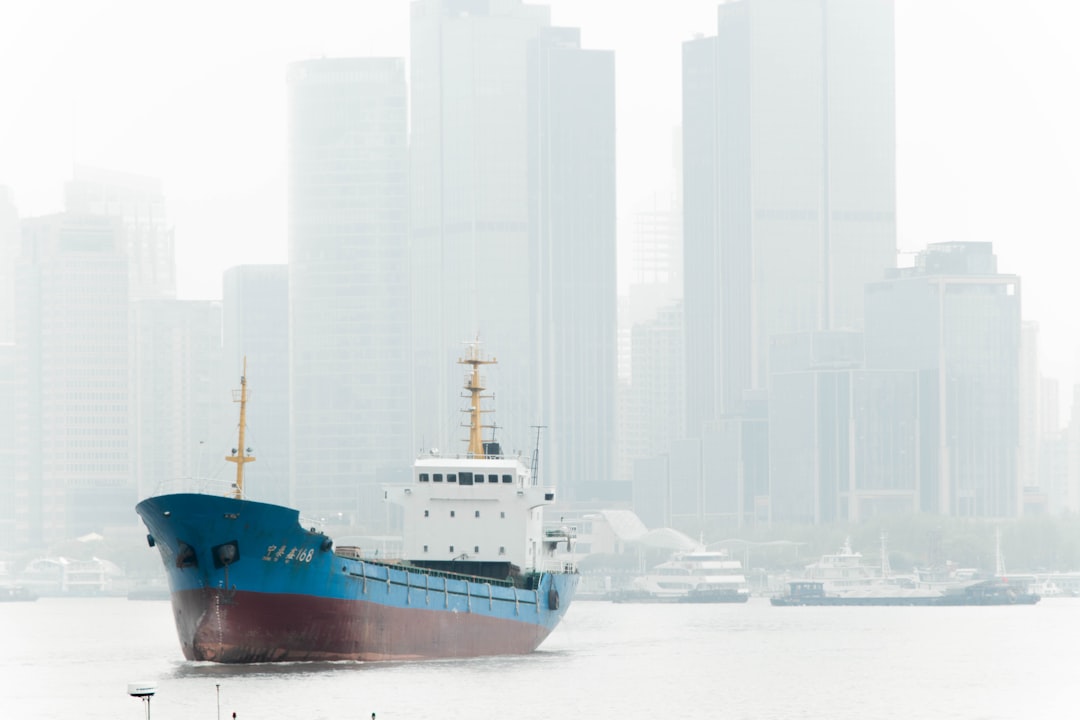In today’s interconnected world, efficient logistics are the backbone of successful businesses. The movement of goods, whether across oceans or continents, requires a sophisticated understanding of both maritime and land logistics. This post delves into key strategies for optimizing your supply chain, ensuring timely delivery and cost-effectiveness.
1. Optimizing Maritime Transportation: Charting a Course for Efficiency
Maritime transport, while cost-effective for large volumes, presents unique challenges. Optimizing this leg of your supply chain requires careful planning and execution. Key considerations include:
- Choosing the Right Vessel: Selecting the appropriate vessel type (container ships, bulk carriers, tankers) based on cargo type and volume is crucial. Consider factors like speed, capacity, and fuel efficiency.
- Port Selection and Management: Efficient port operations are paramount. Factors like port congestion, handling fees, and infrastructure capabilities must be carefully evaluated. Strategically selecting ports with efficient infrastructure can significantly reduce transit times and costs.
- Route Optimization: Utilizing advanced route planning software and considering factors like weather patterns, canal availability (Suez, Panama), and potential geopolitical risks can significantly improve transit times and minimize disruptions.
- Containerization and Handling: Effective containerization, including proper labeling, securing, and tracking, is crucial for minimizing damage and loss during transit. Efficient handling at ports and intermodal transfer points is equally important.
- Insurance and Risk Management: Protecting your cargo against potential risks, such as theft, damage, or delays, is essential. Comprehensive insurance coverage and proactive risk management strategies are critical.
2. Streamlining Land Logistics: Bridging the Gap Between Ports and Customers
Once goods arrive at their destination port, efficient land logistics become critical for timely delivery to end customers. This involves a complex interplay of:
- Intermodal Transportation: Seamlessly integrating different modes of transport (rail, road, trucking) is crucial for efficient delivery. Careful coordination is needed to minimize delays and ensure smooth transitions between modes.
- Warehouse Management and Inventory Control: Efficient warehouse management systems, including inventory tracking, order fulfillment, and storage optimization, are essential for minimizing storage costs and ensuring timely order processing.
- Last-Mile Delivery: The final leg of the journey, often the most expensive and challenging, requires optimized routing, delivery scheduling, and potentially the use of specialized vehicles for specific cargo types.
- Transportation Management Systems (TMS): Implementing a TMS can significantly enhance visibility and control over the land transport process, providing real-time tracking and enabling proactive management of potential delays.
- Partnering with Reliable Carriers: Selecting reputable and reliable trucking companies or rail carriers is essential for ensuring timely and safe delivery of goods.
3. Integrating Maritime and Land Logistics: A Multimodal Approach
True efficiency comes from integrating maritime and land logistics seamlessly. This requires a holistic approach that considers the entire supply chain from origin to final destination. Key strategies include:
- Multimodal Transport Planning: Developing a comprehensive transportation plan that incorporates both maritime and land legs, considering all relevant factors and potential bottlenecks.
- Real-Time Visibility and Tracking: Utilizing technology to track shipments in real-time, providing visibility across all modes of transport and enabling proactive response to potential issues.
- Collaboration and Communication: Fostering strong communication and collaboration between all stakeholders, including shippers, carriers, port authorities, and warehouse operators.
- Data Analytics and Optimization: Utilizing data analytics to identify areas for improvement, optimize routes, and enhance overall efficiency.
- Technology Integration: Implementing advanced technologies such as blockchain, IoT, and AI to improve transparency, traceability, and efficiency throughout the supply chain.
4. Cost Optimization Strategies: Balancing Efficiency and Expenditure
Cost optimization is a crucial aspect of effective logistics. Strategies for minimizing expenditure without compromising efficiency include:
- Negotiating Favorable Rates: Leveraging volume discounts and negotiating favorable rates with carriers and other service providers.
- Consolidation and Load Optimization: Consolidating shipments to maximize container utilization and reduce transportation costs per unit.
- Route Optimization and Fuel Efficiency: Optimizing routes to minimize distance and fuel consumption.
- Inventory Management and Reduced Storage Costs: Implementing efficient inventory management techniques to minimize storage costs and reduce waste.
- Technology Adoption: Adopting technology to automate processes, improve efficiency, and reduce labor costs.
5. Risk Management and Contingency Planning: Navigating Uncertainties
Global logistics are inherently susceptible to disruptions. Proactive risk management and contingency planning are essential for mitigating potential problems. This involves:
- Identifying Potential Risks: Identifying potential risks, including weather events, geopolitical instability, port congestion, and supply chain disruptions.
- Developing Contingency Plans: Developing detailed contingency plans to address potential disruptions and ensure business continuity.
- Insurance and Risk Transfer: Utilizing insurance to mitigate financial losses associated with unforeseen events.
- Diversification of Suppliers and Routes: Diversifying suppliers and transportation routes to reduce dependence on single points of failure.
- Regular Monitoring and Review: Regularly monitoring the logistics process and reviewing risk management strategies to ensure their effectiveness.
By implementing these strategies, businesses can significantly improve the efficiency, cost-effectiveness, and resilience of their maritime and land logistics operations, paving the way for global success.
SEO Tags:
- Maritime Logistics
- Land Logistics
- Supply Chain Management
- Logistics Strategies
- Global Logistics




